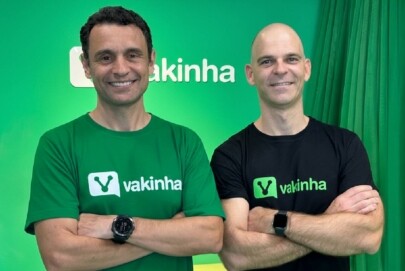Céu e Inferno do Burger King
A marca tem hoje um excelente plano para transformar-se, como faz muito bem Red Bull, numa marca da cultura pop contemporânea. E, ao mesmo tempo, dá uma mega pisada na bola em campanha eugênica na Copa da Rússia.
Veja abaixo dois textos da publicação Marketing Dive, um com extensa reportagem sobre os 5 passos para a marca se transformar em ícone pop e outro sobre o post infeliz que estimula que mulheres que engravidem de jogadores de futebol na Copa provem a concepção durante o evento, o que, segundo os brilhantes criadores do post, ajudaria a melhorar o gene das próximas gerações de futebolistas da Russia. Inacreditável.
—-
Burger King’s 5-step plan for hacking pop culture
CANNES, France — Over the past four years, Burger King has repeatedly turned popular moments into breakthrough advertising that “hijacks” media, frequently earning the ire of the owners of platforms ranging from Google Home to movie theaters. It’s a strategy that has proven to be worth the risks it comes with, generating more than 30 billion impressions, executives from the brand and its agency David said during a session at Cannes Lions.
The tone for the session, “The Rise of Hackvertising,” was set before the first person stepped on stage, with a screen projecting images of the well-known, mustachioed Guy Fawkes mask used by the hacking group Anonymous and a soundtrack of static noise. “Hackvertising,” the speakers explained, involves closely watching conversations trending on social media and in the news and then finding relevant ways to insert the brand into those conversations — even if it involves breaking some rules.
One of the best-known examples is when Burger King broadcast a U.S. TV ad that asked Google Assistant to explain what a Whopper is, resulting in Google updating its Home software so it wouldn’t happen again. Burger King then hacked the fix so the ad still worked as intended. The brand has repeatedly used a similar approach across multiple markets, driving significant engagement but also getting shut down by unhappy “hacked” platforms.
“We’ve seen 30 billion impressions and $400 million in earned media in the four years we’ve been working with Burger King,” said Juan Javier Peña, executive creative director at David The Agency. “This is probably one of the biggest hacking attacks in the history of hacking.”
Wearing many hats
Hackers come in several different forms, which the speakers referred to as white hat hackers, or those hired by a company to ferret out issues in a system; gray hat hackers — those who are in it to have some fun; and black hat hackers, who are looking for personal gain. In one example cited on the panel, a hacker took over Burger King’s Twitter account several years ago and made it look like McDonald’s, underscoring how some of what hackers do could apply to advertising.
“We spend a lot of time researching hackers,” said Peña. “If we could decode the way that they hack, we could bring it back to advertising and it would be a way to hack pop culture on a consistent basis.”
During the session, the speakers explained the five steps necessary for hackvertising. The first is to find and pick a system to hack, something hackers do when they monitor systems to look for vulnerabilities. The folks at Burger King and David the Agency closely follow Reddit, Imgur, influencers and Trendsmap, as well as the mainstream media, to see what people are talking about.
Burger King goes to Washington
For example, last year, after a new Star Wars film was released, the team noticed that very few people were talking about the movie and what was trending instead were terms like “net neutrality” and “FCC.” After some research, the team realized that very few people actually knew about the intention to end net neutrality or what that would actually mean.
Get marketing news like this in your inbox daily. Subscribe to Marketing Dive:
The agency folks came up with the idea of replicating what the end of net neutrality would be like for in-store customers by creating a fast and slow lane for burgers and filming their reactions, which was then turned into an ad. It has become Burger King’s most shared ad ever with 4.3 billion impressions. Additionally, the stunt was widely covered by media and even caught the attention of politicians, including garnering a mention by a senator at a hearing, who pointed to the ad as a clear explanation of why net neutrality is good for consumers.
“Not even in my craziest dreams I would think that our brand would wind up in the U.S. senate to help people understand something that would become a big issue,” said Fernando Machado, CMO at Burger King.
Clowning around
In another example of monitoring and defining a hackable moment, Burger King ran an ad in movie theaters in Germany that looked like the credits for the horror film “It.” The ad featured a scary clown — much like the villain of the movie — and the tagline “Never trust a clown,” with Burger King’s logo and other identifiers not making an appearance until the very end.
While using a clown is clearly a reference to Burger King competitor McDonald’s, the idea for the ad came from data showing the trailer for “It” was the most watched at the time. Other data showed that people were looking at more content related to clowns than to vampires. The ad ran in theaters for the premiere of “It” and was deemed a success by the brand even though it was sued by one of the parties involved in the film.
Bending the rules
Step two for creating hackvertising is to study the rules so they can be bent or even broken sometimes. This step relates to how hackers get into the software they are hacking and then quickly get out so that they don’t go to jail.
As an example of step two, Burger King’s creative team pointed to how it promoted a day without Whoppers in Argentina as a way to insert itself into a local conversation that happens every year, when McDonald’s pledges to donate the proceeds from Big Mac sales to a foundation for children. An ad for the effort shows the Burger King mascot going to McDonald’s to buy a Big Mac to support a good cause.
“Because we did something good, it was considered a win-win for everyone,” Machado said.
In Romania, where the only Burger King is in the airport after the security checkpoint, the chain created a website where locals could find super low-cost airfares and then trade in their boarding passes for Whoppers after passing through secuirty. Once the airport caught wind of what was happening, it shut down the promotion.
A worthy risk — but be prepared
Step three of hackvertising is finding a relevant way for a brand to break into the conversation, which requires clarity on the brand point of view and clear objectives to be successful, per Peña.
Burger King decided to insert itself into a social conversation about what a correct burger emoji looks like, with some arguing for the cheese on top and some for it on the bottom. The chain’s answer was to create an emoji Whopper and ask fans to post an Instagram Story using the emoji then show it in a restaurant to receive a coupon.
Burger King in Peru jumped into a conversation about a rule enabling moviegoers to bring food into a theater as long as it is similar to the food that the movie theater sells. Since many Burger King locations in Peru are in malls and therefore close to a movie theater, the chain created a fake popcorn bag with a little bit of popcorn on the top that hid a burger and fries underneath. During the week when the item was available before theaters figured out what was going on, sales were up 40% in those locations.
Step four of hackvertising is staying in close contact with a brand’s lawyers as there is a gamut of potential issues that can crop up, some easily identifiable and others not as much, with hackvertising.
And the final step is deploying the attack.
“It is risky, but it is worth it,” said Ricardo Casal, executive creative director at David Miami, of engaging in hackvertising.
Campaign Trail: Burger King Russia’s World Cup disaster
Burger King Russia pulls ad rewarding women impregnated by World Cup stars
The rundown: The corporate account for Burger King Russia is backtracking this week after running a social media campaign offering free Whoppers for life and 3 million Russian rubles (around $47,000) to women who could prove they were impregnated by players on the country’s World Cup team.
The campaign’s goal, according to the Associated Press, was to increase the athletic genes in the nation and “ensure the success of the Russian team for generations to come,” implying that those children would grow up to one day be soccer stars.
The results: Naturally, Burger King’s promotion was short-lived and yielded heavy criticism for inching far too close to the realm of eugenics. The ad was quickly met with a flurry of angry responses from the public, even after the fast-food chain removed the post on Tuesday and apologized on the social media site VKontakte — Russia’s equivalent of Facebook — with the statement: “We offer apologies for the announcement we made. It was too offensive.”
The advertising industry has a long record of playing on sexist stereotypes, especially around sporting events like the World Cup or Super Bowl, where marketers have objectified women to sell products like beer and snacks to a historically male audience. Burger King Russia takes this to a new, grotesque level by promising to reward women who bear a soccer star’s child with fast-food burgers and more than the average Russian’s annual salary.
While the effort may have been just a joke, as the Russian branch of the fast-food giant claims, it’s one that makes the global chain look tasteless and insensitive during a high-profile event.
—Natalie Koltun













